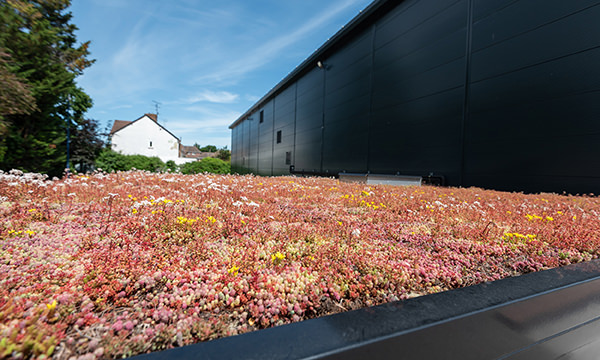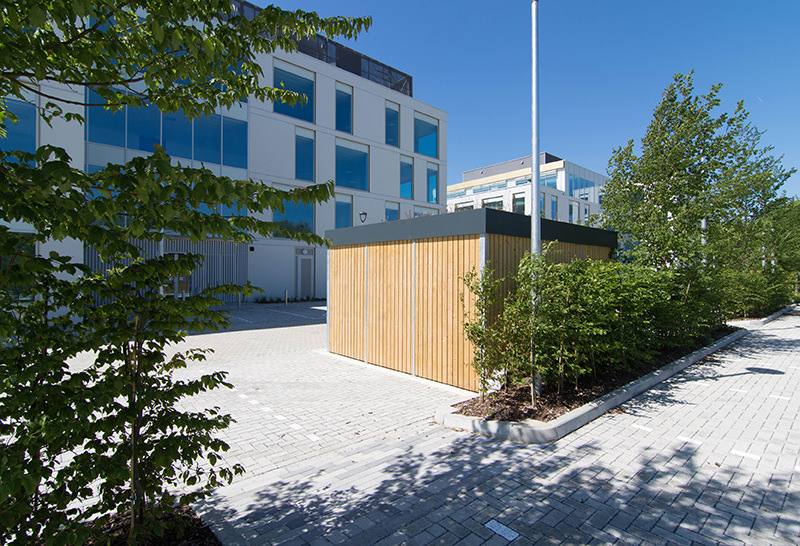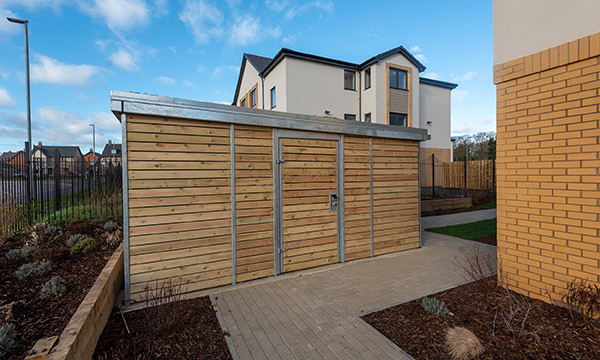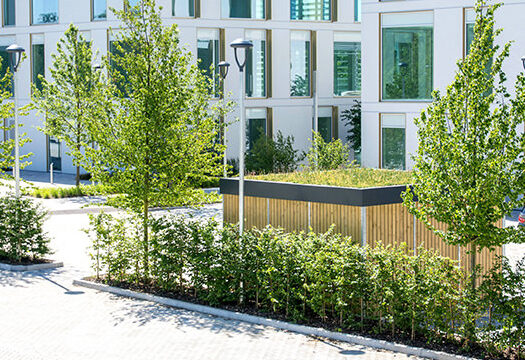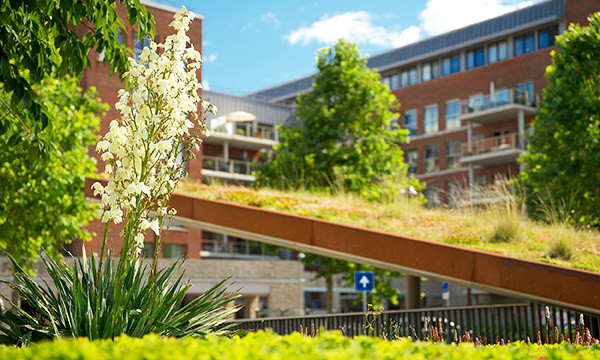Originating in Berlin and since adopted by a number of European cities, the Urban Greening Factor (UGF) is a planning tool to improve the provision of green infrastructure in urban environments. Urban greening covers a range of options and can be used to help meet other policy requirements, enabling benefits such as improved amenity, enhanced biodiversity, and reduction of the urban heat island effect. The ongoing maintenance of green infrastructure needs to be considered from the outset, and secured through the planning system.
Natural England has developed an Urban Greening Factor for England as a voluntary consideration, as part of the Green Infrastructure Framework – Principles and Standards for England. However, urban greening is now a requirement from the Greater London Authority for all major new developments as a fundamental aspect of site and building design, included in the London Plan Policy G5.
How is the Urban Greening Factor Used?
The Urban Greening Factor (UGF) is used to evaluate and quantify urban greening proposed in new developments, enabling developers to identify the appropriate amount of urban greening and to demonstrate how they have integrated this as a fundamental element of building design.
Requirements for the UGF should be prioritised in the design process, with this early evaluation of options informing wider design decisions. This also helps to ensure site specific constraints can be accommodated, as well as enabling opportunities to link on-site greening with the wider green infrastructure network.
Examples of how urban greening can align with the specific characteristics of a development site include:
- Establishing green routes that promote active travel where current opportunities are limited.
- Utilising design cues from local habitat types, the Local Nature Recovery Plan, or the Biodiversity Action Plan.
- Reducing the urban heat island effect by developing greening plants that have a cooling effect.
- Delivering publicly accessible open space for the public to reduce local deficiencies, or providing other types of accessible greening where this cannot be reduced.
- Mitigating environmental noise from urban activity.
How is the Urban Greening Factor Calculated?
Varying types of greening that can be incorporated into a development are categorised by surface-cover types, indicating their relative quality and potential for rainwater infiltration. These include but are not limited to: high-quality landscaping, green roofs, green walls, and vegetated drainage systems.
The UGF should be tailored to local circumstances and works by assigning a factor score to each surface cover type proposed in a planning application, with scores ranging from 1 for semi-natural vegetation, through to 0 for impermeable sealed surfaces, such as concrete.
These factor scores are designed to encourage the provision of higher-quality urban greening, rather than large quantities of low-quality features. The formula for calculating the overall GSF score can be applied as follows:
- For each surface-cover type, assign the corresponding factor score
- Measure the area of each surface-cover type in square metres
- Multiply the factor score by the area of the corresponding surface-cover type
- Add the scores together and divide the combined score by the total site area in square metres to determine the overall UGF score
Can the UGF be Used to Deliver Biodiversity Net Gain?
An ecologically informed approach can be valuable for creating new areas of wildlife habitat to deliver BNG alongside green infrastructure benefits. These should be developed to contribute to local biodiversity priorities and the Local Nature Recovery Plan, where applicable.
While ensuring compliance with one requirement does not guarantee the other, it’s advised that developments consider urban greening alongside BNG as part of the project design brief. Developments should ensure that any Preliminary Ecological Appraisal Reports or Ecological Impact Assessments highlight opportunities for urban greening to deliver biodiversity gains.
Can Green Roofs Contribute Towards the UGF?
A valuable resource for achieving BNG targets, both intensive and extensive green roofs can help contribute towards the UGF as surface-cover types, as long as they meet the requirements of the GRO Green Roof Code 2014.
Intensive green roofs with a minimum substrate depth of 150mm can contribute a factor score of 0.8, while extensive green roofs with a minimum substrate depth of 80mm, or 60mm beneath a vegetation blanket, can contribute a factor score of 0.7.
Specifying Green Roofs on External Storage Units
With the potential to promote urban greening and varied ecosystems, external storage units are ideally suited to support both extensive or intensive green roof systems, available as sedum only, or sedum and wildflower.
Reducing the urban heat island effect by establishing greening plants that have a cooling effect, specifying a green roof system on external storage can help contribute to local biodiversity principles, while the lower height from ground level and uncomplicated construction of these structures helps to ensure that ongoing maintenance requirements are reduced.
Removing the design and construction processes associated with a bespoke build, green roof storage units enable considerations for the UGF to be accommodated from the outset of the design process, and demonstrated clearly as part of the planning process, providing opportunities to link on-site greening into the wider green infrastructure network.
